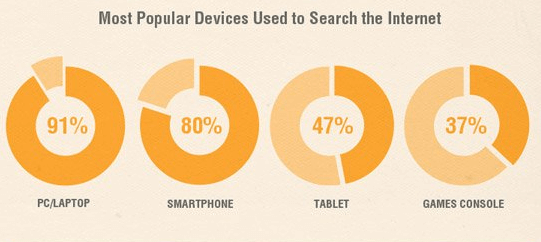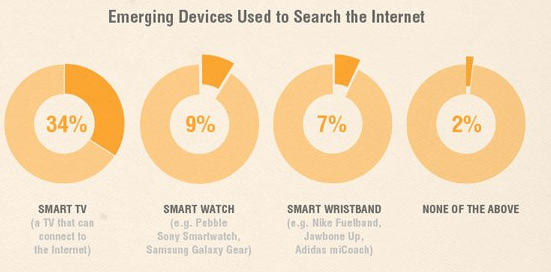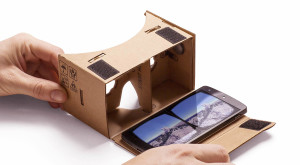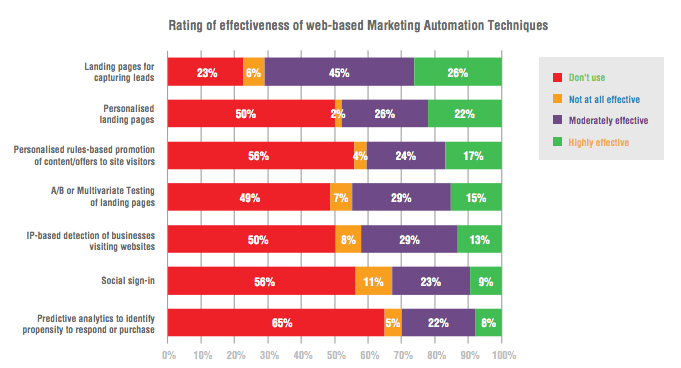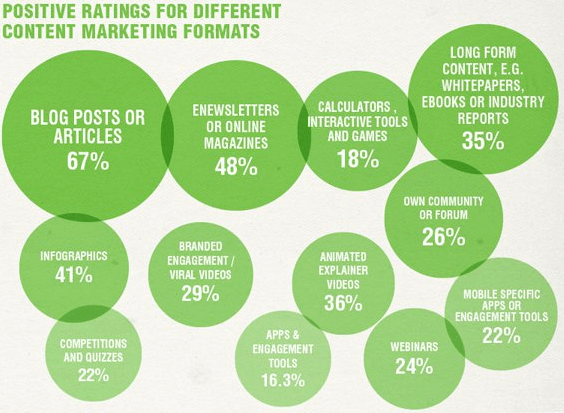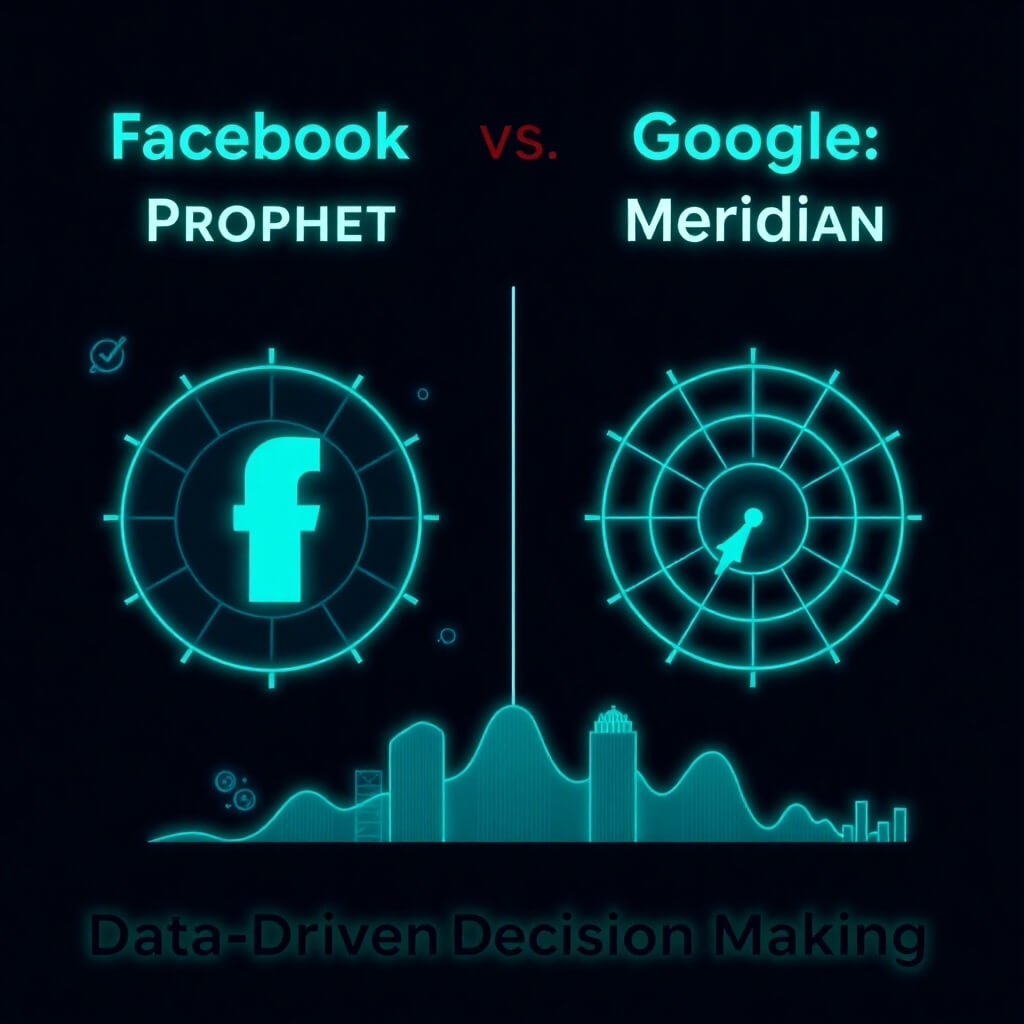Mobile morphs
http://www.smartinsights.com/digital-marketing-strategy/digital-strategy-development/15-unstoppable-trends-which-will-shape-marketing-in-2016/
Devices accessing internet and content have morphed considerably over the past few years, especially when you look at add on devices like Googles Chromecast and Amazon’s Firestick and of course the Apple iWatch.
Smartphones have become defacto and ever more popular (thanks for the Google Cardboard @michaelorlinski), while Games consoles and Smart TVs have become able to access the internet and are starting to account for devices and apps integrating more and more advertising for continued fragmentation of ad dollars and eyeballs.
My Samsung S6 phone has more toolsets than a tricorder. How will app developers tie all this into the web and internet of things specifically focused on the mobile experience remains to be seen.
The S6’s hidden sensors
- Magnetometer: Aides navigation and operates the phone’s compass.
- Barometer: Used to measure atmospheric pressure, allowing predictions in the weather.
- Gyroscope: Allows your phone to orientate itself, depending on which way you’re holding it. Like when you watch a video and you flip it to landscape.
- Thermometer: Determines the temperature, to keep you up to date on your surroundings.
- Proximity: Allows the phone to detect when something is close to it, so it switches off the screen when you’re making or taking a call.
- Accelerometer: This is for motion control and games – like when you tilt the phone to steer in driving games.
- Light: This lets the phone adjust the screen brightness depending on your surroundings.
Ad spend and viewability
Ad spend will rise with an equal focus on accountability as defined by viewability.
Viewability is defined as an ad visible to a person while consuming digital content online. That does not mean the ad is below the fold in order to count as an impressions.
A comScore study found that more than half of digital display impressions were non-viewable. While the study is from 2013, ongoing tracking of this issue indicates the ratio of viewable to non-viewable spots is no better today.
In a recent white paper by Conversant regarding “The Ad Quality Conundrum” the usual suspects are analyzed regarding browser load times, user behavior, non -human traffic, and publisher labels, however the difficulty in viewablity and delivery that stuck out was around fluid formats.
“The format of digital media is not confined to what is visible on a screen at any given time. Web pages tend to be longer and wider than can be displayed on most digital screens.”
Ad spend will continue to increase online however more attention will be placed on viewablity, even google recently announced for the GDN that their terms have changed. Google announced changes to its display ad network that will ensure advertisers only pay for ads that are 100% viewable.
And so, games and new “viewable” formats, specifically in the emerging VR world will present issues of viewablity and accountability to the ad networks.
Ad blocking
With ever improving “fingerprinting ” technology, following users from desktop to smart devices is ever improving and increasingly assisting to provide conversion lift.
However with ad blocking technology moving more int place will publishers fight back by not showing you content if you try to bloc ads like Forbes recently initiated.
Visitors using desktop browser ad blockers are greeted with a polite but firm message on the “welcome screen” ad page Forbes serves prior to landing on its site.
Watch for further integration of native ads to bypass ad blocking ~
Video Content explodes, moving towards VR
GoPros, drones, the 360 Fly, Luna 360 are producing high quality footage and gearing up for the VR experience.
1 year from now–74% of all the content that’s consumed online will be video content.
Virtual realities exponential growth and the video tools necessary was shown when Luna 360 raised more than double its $50,000 goal on crowdfunding platform Indiegogo.
See Mobile Morphs for VR consumption
Marketing Automation gains traction
Lots of companies have marketing automation platforms in place but very few use more than 10% of the horsepower these systems can provide.
Finding qualified individuals to setup and run the systems will be a huge issue for those looking to get their marketing mojo in order.
Updating marketing rules every quarter based on marketing initiatives is key to succeeding and will be necessary as more brands start to invest in the skills of their staff in this area, allocating time/budget for personal development and investment in training.
Understanding the need in developing a roadmap for testing and landing page development, and testing will be key areas to brands will need to focus on.
Creating drip campaigns with worthwhile content and measuring the effectiveness of that content should also be a primary concern moving forward.
http://www.smartinsights.com/?attachment_id=59451
Facebook wins (ads) and loses (content)
As “organic content” on Facebook continues to lose traction in reach and penetration, users are starting to lose interest in the non-linear experience Facebook has been providing.
As Edgerank continues to devolve into a pay for placement and attention grabbing mechanism, you will see more ad formats come out in 2016 with a higher amount of pressure on brands to pay to play.
Blogs pick up pace
http://www.smartinsights.com/digital-marketing-strategy/digital-strategy-development/15-unstoppable-trends-which-will-shape-marketing-in-2016/
Content marketing has left many companies without a coherent content plan, and huge gaps in content they should or could be producing vs slamming strings of words together in order to fulfill a 2 blog post a week criteria.
Creating a content calendar and finding the right folks to help develop a blended content format, think video, infographics, podcasts, which can be complimentary will be key.
Right now there is too much content being created of low quality. Set your quality sites higher for 2016.
IOT
The internet of things goes beyond what you may have originally imagined or what is still to come. Considering a pacemaker is programmable and hackable we have had an internet of things before the term was even coined. Dick Cheney had his pacemaker interface disabled for those very reasons of security and hackability.
Get ready for mayhem as tinkerers and those with malfeasance and NGO’s dive deeper into tweaking externally controlled devices that are linked to the web.
We tried out at Overdrive a Chromebit with impressive results. With powerful devices reduced to the size of a pack of gum, time and imagination will be the only barriers to an embedded world as already seen with devices like Raspberry Pi and Arduinos.
Check out https://www.shodan.io/ which is a search engine for connected devices like buildings, stoplights, web cameras etc….
Data Sovereignty
As a citizen of the world the concept of Data Sovereignty is interesting to say the least. I do want to be protected from what might be construed in a country less liberal than a draconian human rights abuser but am still confused by the concept of a “national cloud”. What if I have dual citizenship?
64% of organizations cite the issue of compliance, auditing and privacy as the biggest security challenge associated with cloud computing. See the CipherCloud survey
2016 will see this issue start to boil.
Gartner defines this type of security solution as a cloud security gateway: “Cloud security gateways are on-premises or cloud-based security policy enforcement points placed between cloud service consumers and cloud service providers to interject enterprise security policies as the cloud-based resources are accessed. Cloud security gateways consolidate multiple types of security policy enforcement.”




